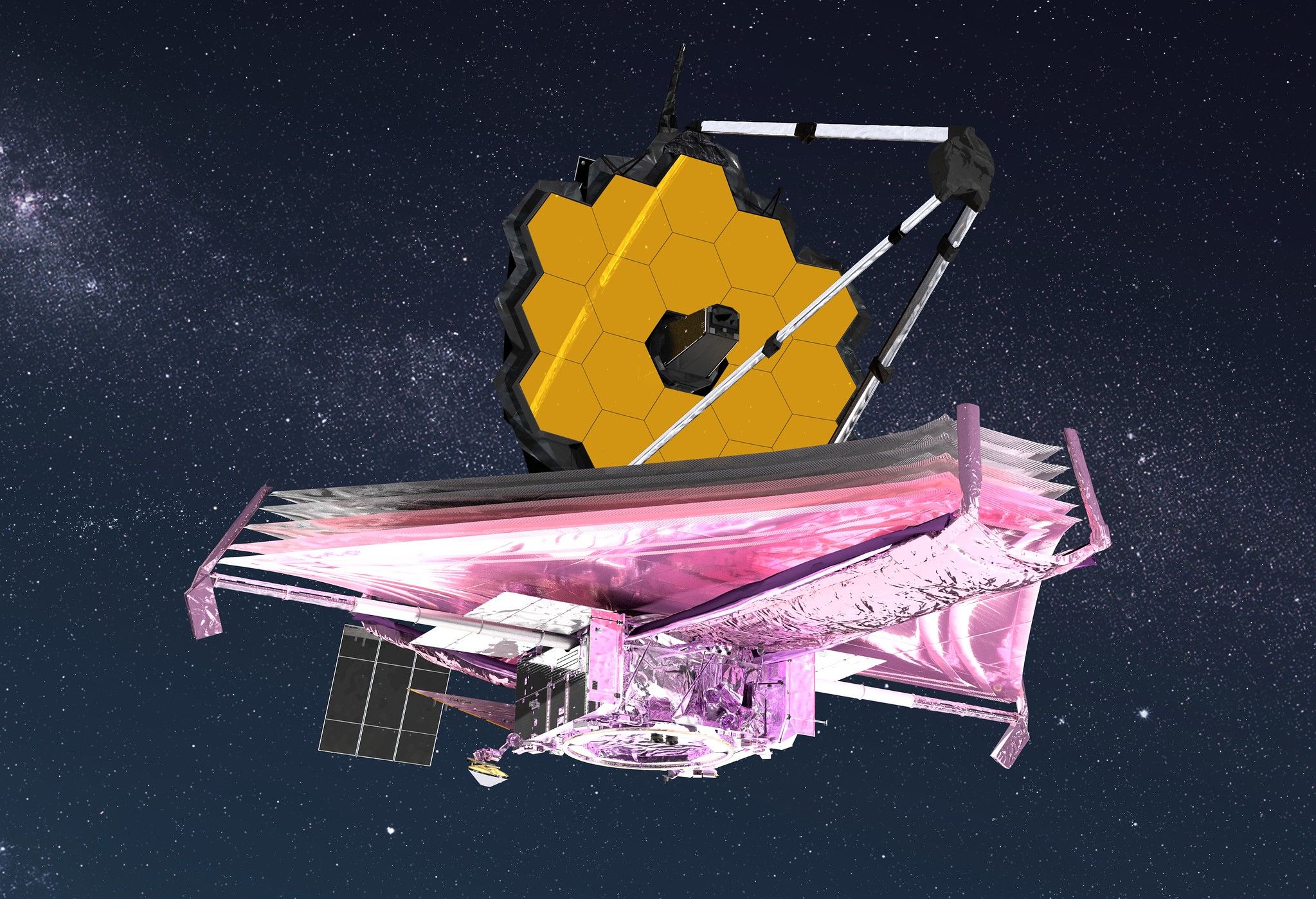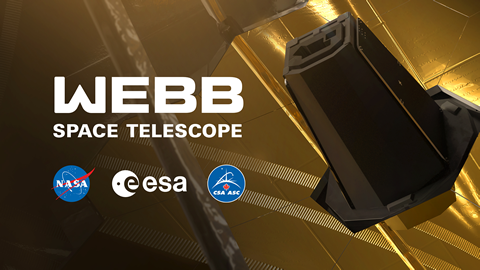Alter_Fridge
Member
What are the chances that the telescope gets hit by a meteoroid or something like that?
I read that as a Metroid lol
Last edited:
What are the chances that the telescope gets hit by a meteoroid or something like that?
y cant jwst crawl?
What kind of thing could they see out there that would make them go "hmm... we better keep that to ourselves"? If they got back the picture of a planet that had many ships orbiting, would they tell us?The detail they're going to pull out of this galaxy is going to be insane, the most distant ever seen. Personally can't wait to see the Webb ultra deep field.

What kind of thing could they see out there that would make them go "hmm... we better keep that to ourselves"? If they got back the picture of a planet that had many ships orbiting, would they tell us?
Ehh dont think it works like that. Even the Hubble sees the Webb as 1 point of light and its damn close. So I doubt they can literally see planets with Webb.
Yeah you're not getting that kind of detail from Webb but it will be able to detect and measure the atmospheric conditions on exoplanets and that's the best we can hope for in terms of the search for life.What kind of thing could they see out there that would make them go "hmm... we better keep that to ourselves"? If they got back the picture of a planet that had many ships orbiting, would they tell us?
Webb has the ability to, though indirectly but it will be able to detect biosignatures in exoplanets but most importantly we need to know where to look. You have to be realistic here. The universe is unimaginably huge.whats the cost?!?!? 10 billion? 20???
....anything less than finding aliens is a failure
whats the cost?!?!? 10 billion? 20???
....anything less than finding aliens is a failure
That's relatively cheap compared to all the other stuff the USA spends money on.whats the cost?!?!? 10 billion? 20???
....anything less than finding aliens is a failure
Webb will be able to visualize the same exoplanets that Hubble can. There's not much detail, it's just a point of light orbiting a star, usually. And the systems where we can see the ecliptic plane top-down/bottom-up are not that common. It requires chance alignment really. But Hubble and others have directly-imaged exoplanets before. Just that they're all either hot Jupiters or borderline brown dwarfs.Ehh dont think it works like that. Even the Hubble sees the Webb telescope as 1 point of light and its damn close. So I doubt they can literally see planets with Webb.
ya know im not even really that into this stuff, not like some of you, at least. but this was super interesting and educational and i have to recommend it to anyone else who is curious, even if youre a dodo like me lol. thanks for sharing!
What are the chances that the telescope gets hit by a meteoroid or something like that?

Q: Once Webb is in orbit, how susceptible will it be to micrometeoroid strikes? For example, what would happen if one of Webb's primary mirror segments or the sunshield got struck?
Paul: Although space is mostly empty, there is some debris. In the inner Solar System where Webb will orbit, we have a good understanding of what the population of meteoroids is like from years of observations and research. It's mostly dust and very small particles, with the majority being sparsely distributed and tinier than grains of sand. There are some pebbles, rocks, and boulders, but they are very sparse and very rare. At Webb's orbit at L2, the debris is all natural and the environment is not as hazardous as it is much closer to Earth, where there is a fair amount of human-generated "space junk."
We know Webb will get struck by micrometeoroids during its lifetime, and we have taken that into account in its design and construction. We sized Webb's main mirror so that even after years of little impacts it will still have the reflective surface area and quality necessary to do the science. We even did tests on the ground that emulated micrometeoroid impacts to demonstrate what will happen to the mirrors in space.
Similarly, part of the reason the sunshield has five layers is so it can tolerate more than the number of expected small holes, and even some tears, and still work as it should.
Also, almost all of Webb's sensitive components (besides the mirrors and sunshield) are protected behind "micrometeoroid armor." When micrometeoroids do strike, most are so small that they totally disintegrate upon impact, even when they hit something thin like thermal blankets or a sunshield membrane. Critical wires and electronics are shielded behind even more robust metal "armor" or inside metal boxes.

How Hardy Is Webb? A Q&A About the Toughness of NASA’s Webb Telescope - NASA
Just how resilient does a space telescope have to be to survive both Earth’s environment and the frigid, airless environment of space? Paul Geithner, thewww.nasa.gov
They expect Webb to get hit by micrometeorites and have designed it to take some damage and continue to function.

/cloudfront-ap-southeast-2.images.arcpublishing.com/nzme/R5F3C7GC6YAHUPXEPLBESO22NI.jpg)
Actually, I *was* thinking about micrometeoroids since the mirror is such a delicate instrument and the debris travel at such high speeds.No problem! Was quite happy to have stumbled upon it myself
Really puts things into perspective and they present it in a really easy to understand way.
I think one thing a lot of people have a hard time wrapping there minds around is how absolutely big and empty space truly is.
I think they said they expect micro meteors in some capacity to hit the telescope, but nothing in the way I'm sure your thinking.
Not to say a tiny spec traveling at 10/km a second isn't something to worry about.
Google:
"The Risks of Orbital Debris Averaging speeds of 10 km/s (22,000 mph), a 1 centimeter paint fleck is capable of inflicting the same damage as a 550 pound object traveling 60 miles per hour on earth. A 10 centimeter projectile would be comparable to 7 kilograms of TNT."
whats the cost?!?!? 10 billion? 20???
....anything less than finding aliens is a failure
"The Risks of Orbital Debris Averaging speeds of 10 km/s (22,000 mph), a 1 centimeter paint fleck is capable of inflicting the same damage as a 550 pound object traveling 60 miles per hour on earth. A 10 centimeter projectile would be comparable to 7 kilograms of TNT."

I remember reading somewhere that if the telescope was somewhere else in the galaxy looking at our solar system, it wouldn't even be able to see the Earth because of the proximity to the sun and brightness.Webb will be able to visualize the same exoplanets that Hubble can. There's not much detail, it's just a point of light orbiting a star, usually. And the systems where we can see the ecliptic plane top-down/bottom-up are not that common. It requires chance alignment really. But Hubble and others have directly-imaged exoplanets before. Just that they're all either hot Jupiters or borderline brown dwarfs.
A ton? There's estimates in the billions upon billions, hell the amount of planets within a stars habitual zone are probably in the billions based on what we've simply observed so far, the numbers are simply incomprehensible to us land monkeys, once we've confirmed bio signatures in exo planet atmospheres itll be game over, job done... Yup life is everywhere in the universe but the distance between stars means we'll never get to fuck with those NaviI remember reading somewhere that if the telescope was somewhere else in the galaxy looking at our solar system, it wouldn't even be able to see the Earth because of the proximity to the sun and brightness.
Probably a ton of planets out there that we just can't see.
It's utterly insane the amounts of money poured into the military industrial complex compared to the amount of money poured into science, health and education... Y'know all those things that could actually make a fucking difference, imagine what NASA could achieve if they had even a fraction of the budget given to one branch of their military...10 billion over 30 years. It's nothing. It actually indicates how underfunded NASA is. This is the thing I don't understand about Americans, with the snap of a finger you can give healthcare, pay off student debts and reinvest in your schools. You pay so many fucking taxes for military, you're being milked for killing machines with spendings that are higher than the combined next 11 countries' highest military budgets.
JWST is a drop in the ocean..
Unfortunately this is a fantasy. But I don't want to derail the thread.10 billion over 30 years. It's nothing. It actually indicates how underfunded NASA is. This is the thing I don't understand about Americans, with the snap of a finger you can give healthcare, pay off student debts and reinvest in your schools. You pay so many fucking taxes for military, you're being milked for killing machines with spendings that are higher than the combined next 11 countries' highest military budgets.
JWST is a drop in the ocean..
KE = mv
It's a bitch.


Today's the day for L2 orbit insertion!
I mean, should be easy enough compared to all the previous things, but you never know.

Sadly it's for the Americans (I'm sure some of get it) who can't understand the metric system, though half an inch would've sufficed I'm sure.WTF kind of unit is "half the length of a paper clip?"
Give it to me in football fields NASA, goddammit, don't make me get my abacus out
With a communications glitch resolved, NASA and the European Space Agency have rescheduled the launch of the James Webb Space Telescope on an Ariane 5 for Dec. 24.
While a formal announcement from NASA and ESA was still pending as of late Dec. 17, various sources, including the Space Telescope Science Institute, said that they had rescheduled the launch for Dec. 24 at 7:20 a.m. Eastern after the communications problem between the spacecraft and ground equipment delayed the launch. The agencies finally publicly confirmed the new launch date early Dec. 18 after encapsulation of JWST within the Ariane 5 payload fairing was complete.

JWST launch rescheduled for Dec. 24
With a communications glitch resolved, NASA and ESA have rescheduled the launch of the James Webb Space Telescope on an Ariane 5 for Dec. 24.spacenews.com
Been a long time coming, I swear I have been hearing about this telescope for about a decade as if it was only a few years away.
Now the time is finally here.
This is actually for the extinction level asteroid that will be hitting Earth in 2029.
You don't need a telescope that can see almost as far back as the beginning of time to see an asteroid that will hit earth.This is actually for the extinction level asteroid that will be hitting Earth in 2029.
You don't need a telescope that can see almost as far back as the beginning of time to see an asteroid that will hit earth.
That's not the pointYup. Still doesn't mean you need a deep space telescope to see them.
